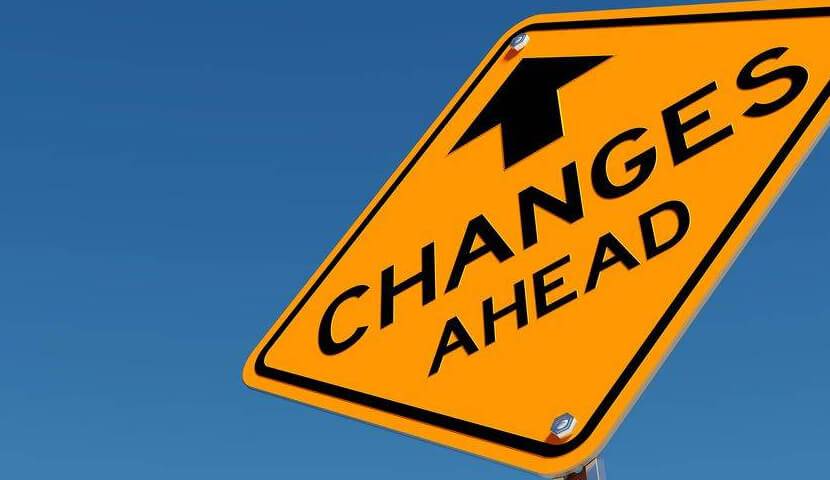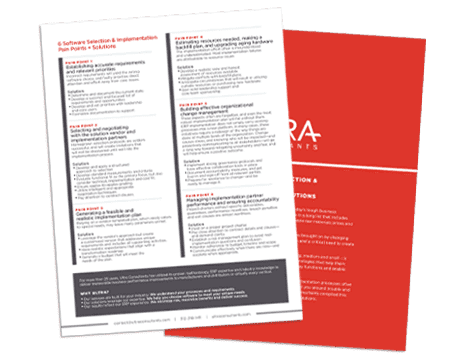Add Your Heading Text Here
Distribution Q&A: Lessons Learned from the Pandemic – and Smart Changes to Make
By Tim Green, Marketing Content Writer
Many distributors struggled amid the uncertainty of the COVID-19 pandemic. But that is old news.
What’s interesting – and important – now is to look closely at how distributors reacted and adapted to a suddenly (and fundamentally) changed business environment, determine the lessons learned from the unprecedented disruption, and identify the changes forward-looking companies should make to their business, strategies, processes and technologies to prepare for the (inevitable) disruptions to come.
We asked one of Ultra’s experienced distribution consultants, David Saunders (DS), for insight into the effects and after-effects of the pandemic from the distributor’s point of view – and the transformations smart organizations are making to ensure they’re ready to handle the unexpected. Here is an edited version of the conversation:

It’s important for distributors to have the right systems to manage effectively, operate efficiently and thrive in the future – no matter what happens.
Let’s start by setting the stage for our conversation. What were the most significant pandemic-related disruptions for distributors?
DS: The biggest problem distributors encountered was major disruptions to their supply chains. Distributors couldn’t get product from their vendors and suppliers, and if they were importing anything, some countries were shut down for a period, and manufacturers and suppliers in those countries were unable to provide items that were ordered.
Obviously, that was a big challenge. Even though U.S. distributors were back at work, they experienced significant supply disruptions domestically and internationally, and then ran into secondary problems like manufacturing shutdowns, driver shortages, travel restrictions and lockdowns. At some points it was impossible to get resupplied.
And there was a secondary disruption, too, which was not any less significant: Because of lockdowns, people were unable or afraid to go anywhere – including the office. Most distributors rely on their sales team to sell products, but salespeople were unable to go out and sell. So, for a lot of distributors, their sales model was disrupted. And, on top of that, if they had an on-premises ERP solution, they weren’t able to access it to get orders into the system.
All of this was, well, not at all optimal. Distributors were challenged getting sales orders and when they could, they struggled getting product to fulfill them.
How did distributors adapt to those difficult circumstances?
DS: There’s only so much you can do if you can’t get product from overseas. For a distributor, the next option is to source what I need locally and domestically and go with a multi-vendor strategy. But that presents its own problem: Am I set up to find and utilize multiple sources for the same or similar product?
Not all ERP systems, especially older ones, are designed to handle an item with multiple suppliers associated with it. As a result, you end up having to manage things manually, including manually overriding orders. Again, that’s not optimal.
The pandemic also created an opportunity for their purchasing team to step back and revisit the products they’re sourcing, where they’re sourcing them from, and look at alternatives. Their most important questions: How can we create an effective supplier strategy and evaluate vendors, so that we know we can always get the product we need? Which products are critical to our business?
As a workaround to lockdowns, and to combat manufacturers bypassing them with direct sales, smart distributors shifted their focus to ecommerce – a change that brought in critical revenue and a renewed emphasis on their value-add.
The value-add can be speed, product offering, product knowledge, customer service, customer support, single-source. Sure, customers could go to the manufacturer to get the product. But if they go to their distributor, they can choose from a broader offering, they can pay one invoice, they can access deep product knowledge and, if they have an issue, the distributor is there to resolve it. A distributor is a one-stop shop. And they’ll take care of you.

6 Software Selection & Implementation Pain Points + Solutions
Software selection and implementation processes often present challenges of their own. To steer you around trouble and help you drive success, Ultra’s experts compiled a list of pain points and solutions to be aware of as you embark on this journey.
Many of today’s B2B customers prefer to buy online.
DS: Right. And, actually, that’s a challenge.
The trend is that B2B buyers are becoming more like B2C buyers. It’s the Amazon effect. Many of today’s B2B buyers want the Amazon experience. They don’t want to talk to or interact with a sales rep. They want to go online, see all the options, know what’s in-stock, place an order, get an email confirmation, and know when it’s going to show up on the dock. That’s what they’re used to as consumers, and that’s what their expectation is when dealing with a distributor in B2B.
It doesn’t mean there isn’t a role for salespeople going forward. In fact, there is a critical role for them. But what they do needs to be redefined. And companies need to transform the service they’re providing through their sales team, and need to change their focus from being order-takers to becoming true partners and product experts who help their customers’ businesses be successful.
With the worst of the pandemic behind us, what are the lessons distributors learned, and how are they adapting their businesses to the new now?
DS: One of the things we’re seeing is that distributors are wondering what they want to be from a strategic perspective. The world’s changed, and this is not going to be the last disruption.
What can they do to prepare their organizations to be proactive and be able to respond and quickly adapt to changes as they come? Do they have the right people, processes and systems in place?
How do they compensate for labor shortages going forward? Who’s going to fill their open positions? Or are we looking at a new dynamic in the marketplace where we rely more on systems to process basic sales orders?
Is their ERP solution current enough to enable more automation, leverage advanced technologies and accommodate change? And is their ecommerce solution integrated enough to be efficient, effective and successful? Can they utilize sales order processing technologies to automate the intake of emailed, PDF and printed orders, and handle invoice and payment, with minimal human interaction?
There are a lot of technologies available to drive sales, mitigate disruption and eliminate basic, manual, non-value-added activities, processes and decisions. But you’ve got to have a modern ERP to take advantage of them.
An important first step to take: Many distributors are moving to a cloud-based ERP solution to enable their people to work remotely. We had a client that went live on a cloud solution right before the pandemic hit, which was fortunate. Their first comment was, “I don’t know what we would have done if we hadn’t migrated to a new solution.” Their old ERP was a stuck-together, very manual, on-premises solution. And now they’re on a modern, cloud-based solution. And they didn’t miss a beat in the pandemic. They were lucky and smart, with our help.
What should distributors do to prepare for future disruptions? Or how can they change their business so disruptions are not disruptive to their business?
DS: There is always going to be some sort of disruption. Are you prepared? Are you thinking strategically about how to react to them?
It’s all about evaluating the three core pieces: people, processes and systems. Do you have flexible processes in place? Are you able to quickly react to unforeseen circumstances?
It’s important to remember, too, that disruptions can be something other than a pandemic. Tomorrow’s disruptions may be technological – 5Q, artificial intelligence, the Internet of Things (IoT), machine learning, etc. These are potentially tremendously disruptive technologies. And for distributors, success may depend on whether they are ready to leverage the advantages and opportunities they offer.
Today, it’s important for distributors to have the right systems to manage effectively, operate efficiently and thrive in the future – no matter what happens. It’s necessary to have the right processes in place to quickly adapt to marketplace changes. And it’s critical to be able to take advantage of advanced technologies.
Want to learn more?
Ultra has helped hundreds of distribution companies modernize their ERP system and optimize their processes. Is your organization prepared for the next disruption and able to adapt to the new now?

Table of Contents
More ERP material...
AI in Food and Beverage Manufacturing
Discover how AI is revolutionizing food and beverage manufacturing, enhancing quality, reducing…
How ERP for Quality Control Eliminates Manual Documentation Chaos
This post will examine why managing quality records outside of an ERP…
Assessing Your AI Maturity
This article breaks down how businesses can measure their AI maturity to…



